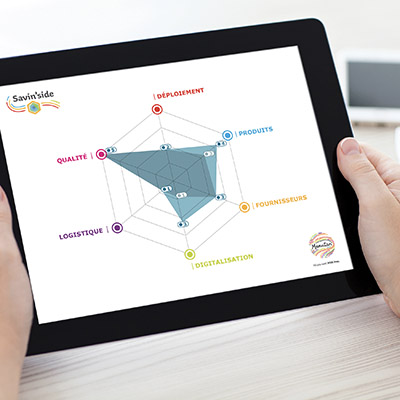"Predictive analytics” is an umbrella term incorporating several kinds of technology for analysing data as well as statistical and mathematical techniques. Their aim is to identify future trends in data sets. Today, this technology is becoming more widely available and is even making its way into procurement departments.
What is predictive analytics?
There are three common types of data analysis with multiple technical implications and purposes:
- Descriptive analysis is a technique that describes and analyses past events (this is what you get with Business Intelligence tools, for example);
- Predictive analytics is used to assess the likelihood of the same results being repeated;
- Prescriptive analysis identifies a phenomenon and suggests actions you should take in response.
Predictive analytics is therefore designed to extrapolate information from a set of past and current data to make predictions about the future and enables businesses to improve their decision-making processes. In other words, forecast is the key word here.
This predictive method is widely favoured by companies. This is particularly the case for the health, energy, financial services, and insurance sectors which use it to identify predictive models, anticipate behaviours or detect a hazard that might occur. This historical data is essential for predicting future outcomes.
For example, when drawing up a car insurance contract, predictive analytics can anticipate a driver’s potential risks by considering several predictive factors (age, driving experience, etc.), which helps the insurance company work out a suitable premium for each of their customers.
On the technology side, predictive analytics often relies on Data Mining to examine large data sets (including Big Data) from different angles and to discover trends or patterns. It also relies on Machine Learning algorithms, such as linear regression or logistic regression, to process unstructured data sets with increased speed and accuracy. Other related predictive analytics methods include statistical modelling.
Predictive analytics applied to procurement departments
Because they are so central to the company’s ecosystem, procurement departments have access to a multitude of data. Used properly, this new "black gold" holds tremendous opportunities for managing the business and building the procurement strategy, according to experts. The idea is to not just act in response to events, but to understand and plan for them. It is important to remember that this information is not an end, but a means of optimising rapid decision-making.
In an uncertain and volatile world where the number of variables is constantly increasing, incorporating a predictive dimension into the procurement function’s decision-making systems makes perfect sense. Although such an application is not yet widespread, observers are noticing a growing interest from the procurement community. In the latest Deloitte survey, more than a third of decision makers believe that predictive analytics is among the most useful resources in their field and that it represents a competitive advantage for companies.
The main reason for the slow uptake of predictive analytics by procurement departments is how complex its implementation steps are. Firstly, a spend analysis system needs to be set up. Before anything can be anticipated, you need to know what products are consumed, by whom and from which supplier, at a given time. Then, all other relevant data from various information sources must be integrated (hence the use of Data Mining). Even now, predictive analytics is a larger-scale project in the company, supporting several departments (sales, marketing, finance, procurement…).
The benefits of using predictive analytics for procurement
Predictive schemes and models can help procurement departments in many ways. Buyers can thus:
- Better manage their supplier relationships;
- Anticipate risks and new purchasing opportunities;
- Predict their spending;
- Adapt their key performance indicators (KPIs) to decision-making, etc.
As a result, they increase in agility and efficiency, helping them continue to establish their strategic positioning within the company.
Beyond predictive analytics, it is easy to see the benefits of prescriptive analytics through its recommendations. Patrick Chabannes, who was Senior Solution Strategist at Determine, a SaaS/Cloud provider of contract management, supplier management, strategic sourcing, and Procure-to-Pay software solutions, shared a clear example of this: "Purchasing IS will have the ability to push recommendations to users while taking personal business rules into account through creating interactive situations. Imagine a direct production buyer monitoring their two qualified suppliers in serial mode. A recommendation comes in telling them that a competitor of their two suppliers has increased its turnover by 17%, while their own two suppliers are at 1% and 3% respectively. The buyer then asks the right questions: What happened? What have they found? What do my own competitors gain by working with their sources? "
As you can see, predictive analytics provides insights that enable procurement departments to anticipate, accelerate and secure their decisions. This is an incredible lever for creating value for the function, the company, and the stakeholders.
However, if you want to take the path that leads to such possibilities, you need to make sure that the data is available. For that, procurement departments need to get proactive and generate as much data as possible so they can analyse it. The best solution is to digitalise the entire Procure-to-Pay process.
- Download our "Digitalise your transactions” white paper









